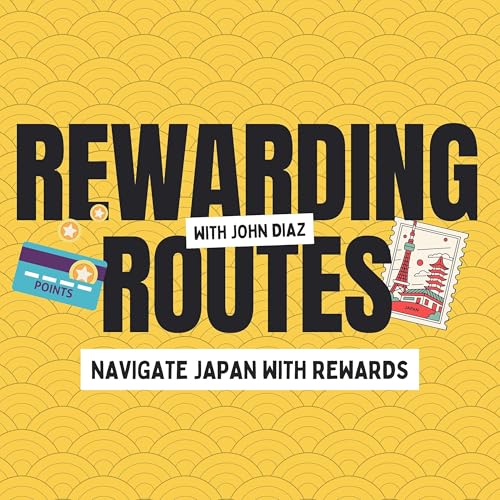
Planning a Japan Trip? The Complete Beginner’s Guide
Failed to add items
Add to basket failed.
Add to Wish List failed.
Remove from Wish List failed.
Follow podcast failed
Unfollow podcast failed
-
Narrated by:
-
By:
About this listen
#6 We kick off at the gateway: Tokyo’s airports. Narita (NRT) is farther but often cheaper with easy rides into the city via Skyliner, N’EX, or comfy airport buses you can book on Klook (taxis from NRT = $$$). Haneda (HND) is my fave closer, with the Edo Marketplace (Terminal 3) for last-minute eats and souvenirs before security. Beyond Tokyo, keep Kansai (Osaka), Itami, Chubu (Nagoya), and Fukuoka on your radar domestic hops or the Shinkansen make multi-city routes effortless.
Essentials that level up your trip: carry some cash (small, family run spots are often cash only), use the money tray at checkout, and consider a debit card that reimburses ATM fees. Keep your passport on you it’s the law and it’s needed for tax-free shopping (note: rules are set to change in 2026). For connectivity, I’ve tried both pocket Wi-Fi and eSIMs; eSIMs win for “one less gadget to charge,” and regional plans make KR→JP seamless. No tipping needed service is built in. Public trash cans are scarce; eat near the shop and toss your trash there (or pack a tiny bag). BYO hand towel bathroom dryers are shy. And yes, wear real walking shoes 20–30k step days are a thing. Biggest sanity saver? Luggage shipping (look for the black-cat Yamato desks). Pay a modest fee, travel hands free, arrive happy.
Timing matters: avoid Golden Week (late Apr–early May) and Obon (mid-Aug) unless you love crowds. Spring blossoms (Mar–Apr) and fall foliage (Oct–Dec) are magic; May and October are comfortably great. Summer brings matsuri fireworks…and serious heat/typhoons choose your vibe accordingly.
Load a regional IC card (Suica/PASMO) into your phone; top-ups are easy (have a non-Visa backup just in case), tap without unlocking, and it even works for a few hours after your phone dies. On trains: be quiet, no phone calls, shift your backpack to the front, and avoid eating on locals (the Shinkansen is the exception). Last trains wrap around midnight plan taxis or…embrace the 5 a.m. first train life. Google Maps is your best friend down to which car to board for the quickest exit.
Speaking of the Shinkansen: book reserved seats (and the luggage-space rows if you’re rolling big), arrive early, and hunt down an ekiben box. Tokyo Station is a wonderland Character Street, Ramen Street, endless snacks budget time to get pleasantly lost.
Food rules the trip: make reservations for popular or high-end spots, expect a small table charge (otoshi) at many izakaya, and don’t customize dishes. Learn a couple phrases and watch doors open literally; I’ve had strangers strike up the kindest conversations. Allergies? Bring a printed card in Japanese. When browsing reviews, a 3–3.5 on local apps can still be excellent standards are high.
For deeper culture, splurge on a ryokan with kaiseki dinner, try an onsen (confirm tattoo policy), book a tea or cooking class, and catch a Japanese baseball game the energy is unforgettable. Choose hotels within a short walk of a station, and pre-book big-ticket experiences (Shibuya Sky sunset, teamLab, themed cafés like Pokémon or Kirby) well in advance they sell out fast.
Finally, embrace safe wandering. Build space into your itinerary to meander; some of my favorite finds (like that surprise banana pastry shop near Skytree) came from unplanned detours. Japan rewards curiosity.
Message me or email RewardingRoutesPodcast@gmail.com
so we can share it with the whole community.
ONLY in JAPAN * John Daub (main channel) — YouTube: https://www.youtube.com/@onlyinjapan
ONLY in JAPAN * GO (live / mobile streaming channel) — YouTube: https://www.youtube.com/onlyinjapango
The Navigatio (blog / Japan travel site) — https://thenavigatio.com/



